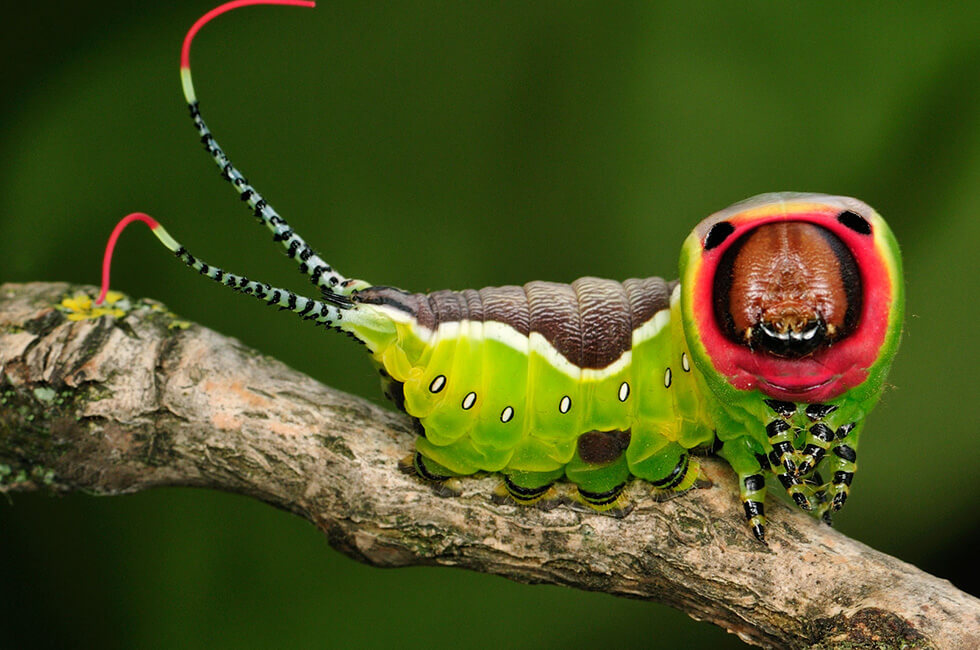Caterpillars can be a major pest of fall vegetables, particularly cabbage, kale, collards, broccoli, and cauliflower. Seedlings and young plants may be killed by caterpillar feeding if left untreated. Caterpillars are easily controlled in vegetable gardens, especially when detected early. In addition to non chemical methods, insecticides are available for control, including several organic products.
Understanding Caterpillars
Caterpillars are the immature life stage of butterflies and moths.
For caterpillars to infest your garden, a moth or butterfly must first fly in and lay eggs on your plants. A small caterpillar will hatch from each egg a few days later and eat on the shell. As caterpillars feed, they grow larger by shredding there skin 5 times, basically they will get 5 times larger. Most caterpillars feed for two to three weeks, and then enter a cocoon.
Caterpillars are easy to detect by the ragged holes their feeding activity leaves in plant foliage. If you notice holes in the leaves of your crops, be sure to check for caterpillars both on the top and backside of plant leaves. For healthy, established perennials, trees, and shrubs, losing a portion of their leaves is not a problem. In vegetable gardens feeding damage is more serious since young plants can easily be killed and missing leaves mean less produce.
Also caterpillar only will eat the same plants as they have been born on, the butterfly will lay there eggs only on the plant which caterpillar can feed on once they hatch.
Control Options
If you have notice caterpillars don’t run to the nearest garden center and purchase an insecticide! Insecticides DO NOT pick and chose, they kill other insects as well!
One of the simplest methods for controlling caterpillars is to pick them off plants and drop them into a bucket of soapy water or squish them. This takes a bit of time and may not be everyone’s cup of tea. Another option is to cover crops mainly vegetable plants with insect barrier fabrics. The fabrics form a barrier, keeping moths from landing on crops and laying eggs in the first place. Since most fall vegetables are grown for their leaves or their roots and do not require pollination, covering them with fabrics does not reduce yields.
As last resort to control caterpillars is to spray infested plants with an appropriate insect control product. Products containing organic and synthetic active ingredients are available from local garden centers. When applying any pesticide be sure to read and follow all label directions and pay careful attention to the per-harvest interval. This is the number of days you must wait between the time you spray the plant and the time you harvest.
PS.
Personally I intend to pick majority of caterpillars by hand and leave a few to hang around. Yes it dose make plants a little bare, but they will thrive back and you’ll enjoy a few butterflies in the garden. Beside butterfly are great at pollinating and they are wonderful to watch in your garden.

